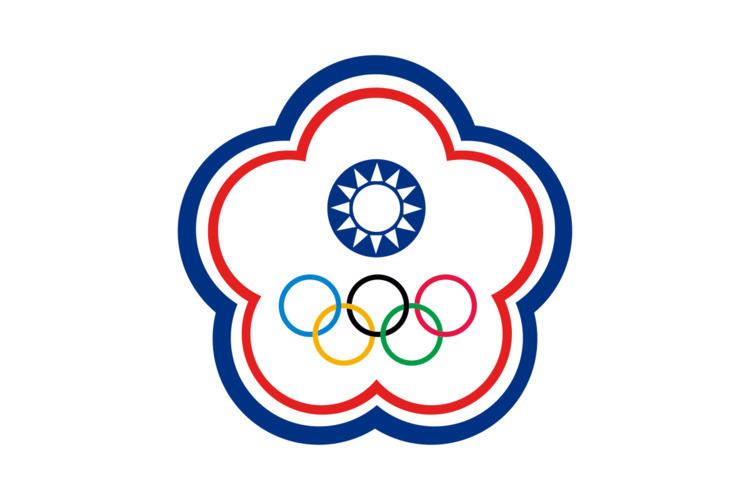Adopted 1980 | Proportion 2:3 | |
 | ||
Use Civil and state flag, civil and state ensign Design A Blue Sky with a White Sun emblem with the Olympic rings, encircled by a five-petaled Prunus mei (the ROC's national flower) drawn in red, white, and blue. | ||
The Chinese Taipei Olympic flag is used by the Republic of China (ROC) team—which competes under the title "Chinese Taipei," during the Olympic Games and the World Baseball Classic instead of the flag of the Republic of China. This is a result of the complex Cross-Strait relations between the Republic of China and the People's Republic of China. The Olympic flag has been in use since 1980, following the decision by the International Olympic Committee that the ROC could not compete under the country's name or flag.
Contents
Due to this restriction, the National Anthem of the Republic of China also could not be played when the team wins medals, so, instead, the National Flag Anthem of the Republic of China was played during the flag raising of the medal ceremony.
The flag shows the Blue Sky with a White Sun (the emblem of the Republic of China and the Kuomintang) and the Olympic rings, encircled by a five-petaled Prunus mei (the ROC's national flower) drawn in red, white, and blue (the colors of the ROC flag).
Court case over IOC decision
The IOC adopted the Nagoya Resolution in November 1979 which called for the "Republic of China Olympic Committee" would have to change its name to the "Chinese Taipei Olympic Committee" and adopt a new flag and anthem if it wanted to participate in the Olympic Games. The ROC strongly disagreed with the decision and sued the IOC in Switzerland. The ROC claimed that the conditions concerning its name, flag, and anthem violated articles 6, 64, and 66 of the Olympic Charter. However, despite appealing an initial court judgment, the ROC was not successful. On January 15, 1980, a Swiss court rejected the ROC effort to remain in the Olympic movement under the name of "Republic of China."
After a series of forceful objections, Taiwan officially accepted the compromise in 1981, and the island competed in its first Olympics in 1984, at the winter olympic games in Sarajevo.
Other flags
For other Olympic-affiliated and international sporting events, Taiwan uses variations on the Olympic flag:
